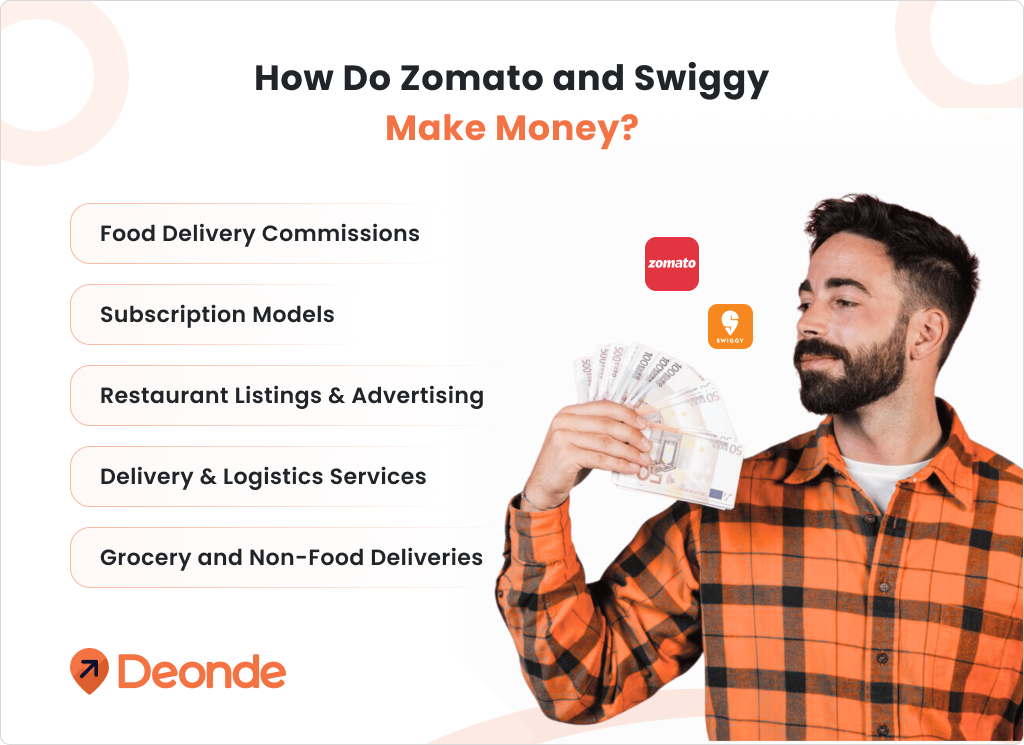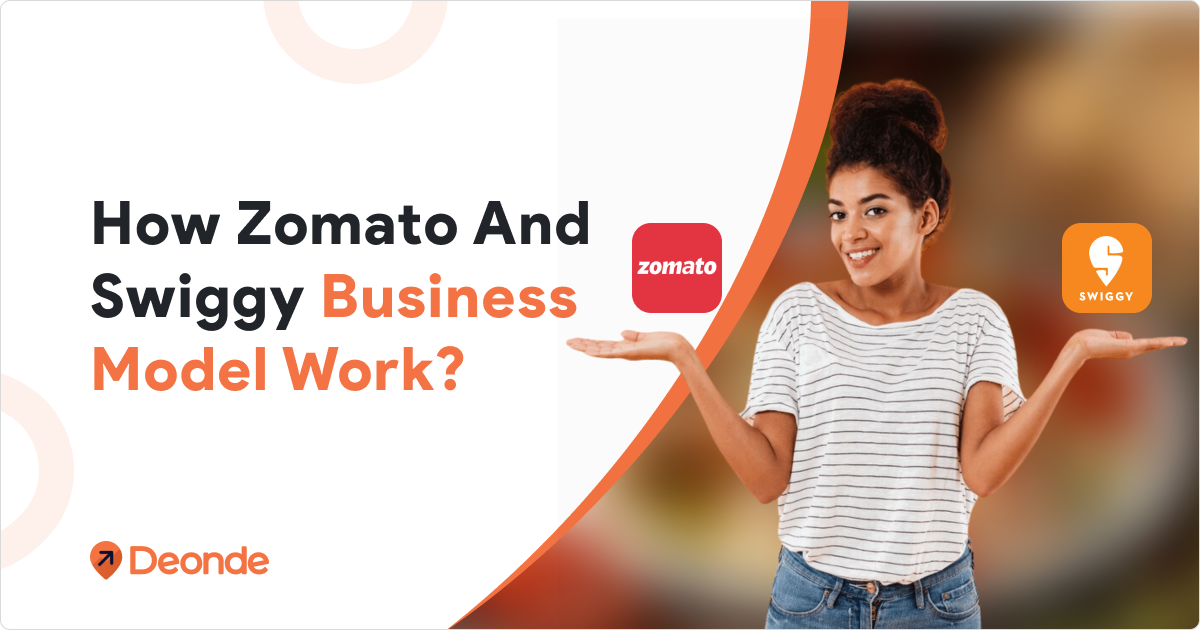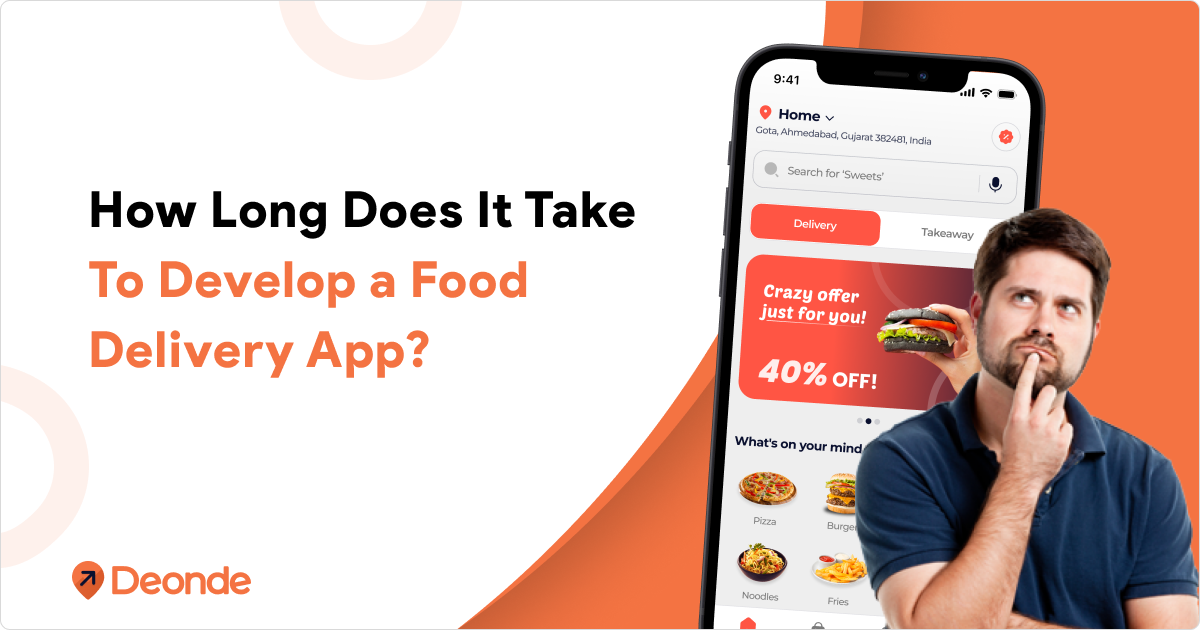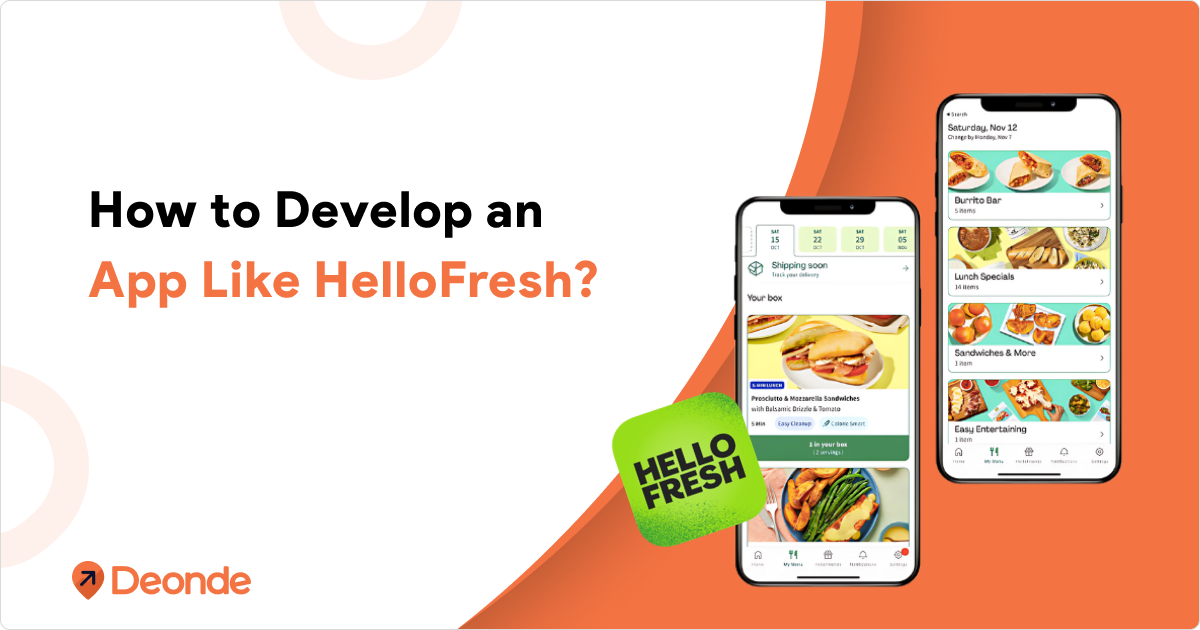Technology has taken over a great part of our lives, and we cannot now eat, breathe, and live without it. From ordering pencils to ordering food, we take the help of technology. Moreover, the impact of technology has changed the habits of us.
For example, earlier, we did not get to see different foods as often because the restaurants were not available nearby or for any other reason. Technology has bridged that gap, and this has changed our habits of food consumption. A variety of food is accessible on our hands, and a few tabs by sitting on the sofa can bring country food to our table.
The growing demand for food has proportionally increased the demand for food tech applications. With the increasing demand for food tech applications in India, investor reliance on food tech businesses continues to remain high.
Moreover, the rapid use of the internet and the growing number of internet users is spearheading the growth of the overall food delivery market.
What is Zomato?
Zomato is an Indian food delivery and restaurant discovery platform. Founded in 2008, it allows users to explore a wide variety of restaurants, read reviews, and easily order food online.
With added features like Zomato Pro, which offers discounts and table reservations, it has become a go-to app for food lovers. Operating in multiple countries, Zomato connects millions of people with their favorite meals and dining experiences, making it a key player in the food industry worldwide.
What is Swiggy?
Swiggy is an Indian-based food delivery platform that connects users with restaurants and delivers food to their doorsteps. Founded in 2014, it has expanded its services to include grocery deliveries through Instamart and package deliveries with Swiggy Genie.
Swiggy offers features like Swiggy Super, a subscription plan for free deliveries, and exclusive discounts. Known for its fast and reliable delivery service, Swiggy operates in numerous cities across India, providing a convenient and diverse range of delivery options.
Features of Zomato and Swiggy
Zomato and Swiggy are two leading food delivery platforms that share many common features while offering unique attributes that distinguish them.
What They Both Offer
- Find Your Favorite Restaurants: You can browse tons of restaurants based on what you’re craving—think cuisine, ratings, or even what’s trending nearby.
- Real-Time Order Tracking: Wondering when your food will arrive? Both apps let you watch every step, from the kitchen to your doorstep.
- Multiple Payment Options: Both platforms support payment through credit/debit cards, digital wallets, and cash on delivery.
- Discounts & Offers: Regular deals, coupons, and discounts help attract and retain customers.
- Ratings & Reviews: Customers can provide feedback on restaurants and dishes to guide others.
- Customer Support: Got an issue? Their customer support teams are on it, any time of the day.
What Makes Them Different
Zomato:
- Enhanced restaurant discovery with detailed menus, high-quality photos, and in-depth reviews.
- Love dining out? Zomato lets you book tables, snag dine-out deals, and explore curated lists like the “Best Restaurants” in your city.
Swiggy:
- A robust delivery network powered by services like Swiggy Super, a subscription plan for free deliveries and discounts.
- Swiggy isn’t just about meals. They’ve got grocery delivery through Instamart and even package delivery via Swiggy Genie.
How online food delivery services Zomato and Swiggy work
In simple words, the concept seems to be straightforward. In setting up a restaurant business a customer browses restaurants, places an order, orders acceptance, delivery driver is assigned, driver delivers the food parcel. Online food delivery today is not limited to the restaurant. It moves ahead and to digital kitchens and native food delivery apps.
Overview of Zomato’s and Swiggy’s Business Model
Here’s a clear and conversational overview of how Zomato’s business model and Swiggy’s business model operate and generate revenue. Both dominate the food delivery space, but they’ve got distinct strategies that make them stand out. Let’s break it down.
How Do Zomato and Swiggy Make Money?
Both platforms share some core revenue streams while also diversifying to keep things fresh and competitive.

Food Delivery Commissions:
This is their bread and butter. Every time you order food, these platforms take a cut from the restaurant. The commission typically falls between 15% and 30%, depending on the partnership. Restaurants that want premium perks like better app visibility or faster delivery might pay on the higher end of that range.
Subscription Models:
Zomato Pro (formerly Zomato Gold):
Zomato offers a subscription service called Zomato Pro, which provides users with exclusive benefits like discounts on food orders and access to special offers at partner restaurants. Zomato charges customers an annual fee for this membership, creating a steady revenue stream.
Swiggy Super:
Swiggy has a similar subscription model, known as Swiggy Super, which offers users perks like free deliveries and exclusive discounts. Swiggy charges a monthly or annual subscription fee, which helps foster customer loyalty and generate predictable income.
Restaurant Listings & Advertising
- Both platforms generate significant revenue through promotional tools for restaurants.
- Restaurants pay for services like enhanced visibility, featured listings, and targeted in-app advertising to attract more customers.
Delivery & Logistics Services
Both companies have invested heavily in logistics to build robust delivery networks, which they’ve leveraged to create new services:
- Swiggy Genie: Customers can use Swiggy for non-food deliveries, such as picking up packages or sending documents.
- Zomato Logistics: Zomato provides delivery solutions to restaurant partners, helping them handle logistics efficiently.
- These services generate revenue through delivery fees and commissions on non-food deliveries.
Grocery and Non-Food Deliveries:
Both companies have also expanded into the grocery and essentials delivery space. Swiggy’s “Instamart” and Zomato’s “Blinkit” allow users to order groceries and other non-food items. This diversification into grocery delivery adds another revenue stream, especially with the growing demand for online shopping and home delivery in the post-pandemic era.
Both Zomato and Swiggy have a successful revenue model. that has worked well for them subscription, commission, and diverse services. They’re so good at innovation it allows them to enter new markets, not just food delivery. They’re taking the concept of convenience in logistics, cloud kitchens, and even grocery delivery to a whole new level.
These are types of Zomato’s and Swiggy’s business models.
DELIVERY ONLY
The business works as a mediator for ordering and delivering food between restaurants and customers, starting with the order-only model. Swiggy built his army on this most basic model by only delivering the ordered food.
END-TO-END MANAGEMENT
Food delivery startups are focusing on handling the entire value chain within this integrated system. This covers preparing food and delivering it, and that is how the adores of Faasos have begun. Domino’s and McDonald’s still favor this model, but these two fast food companies have also been connected to startups in food delivery. Both the quality of food and food distribution are the responsibility of the restaurant in this particular case.
AGGREGATION MODEL
Then comes the model of aggregation, now followed mainly by Swiggy and Zomato market leaders. This has focused only on delivering food and thus left the cooking part to the restaurant. However, establishments may choose to team up with the online food model or achieve it on their own. This, in turn, makes it possible for restaurants and cafes to list themselves to allow food delivery or discover their potential.
CLOUD KITCHEN MODEL
Food delivery companies like Zomato and Swiggy are using a variation in the food delivery and distribution model. However, cloud kitchen entry has opened new revenue pathways and models for these businesses.
Many food delivery platforms are running on cloud kitchens that can cater to many products with a centralized background program and no display cabinets. It helps startups to monitor the whole experience and ramp up in favor of aggregators. Fresh-menu and other cloud kitchen techies exercised this hybrid model.
Closing note
Food delivery platforms like Zomato and Swiggy have complex yet efficient systems that ultimately benefit all stakeholders. It’s in them that we find how well we can blend tech, logistics, and human beings to provide not simply food but an end-to-end customer experience.
DeOnDe, get started with your online ordering systems like Swiggy and Zomato today and reap the profits well into the years to come. We have a transparent monthly subscription model for your unique business with no hidden charges.
You can write your online system queries or questions to us by logging on to www.deonde.co




